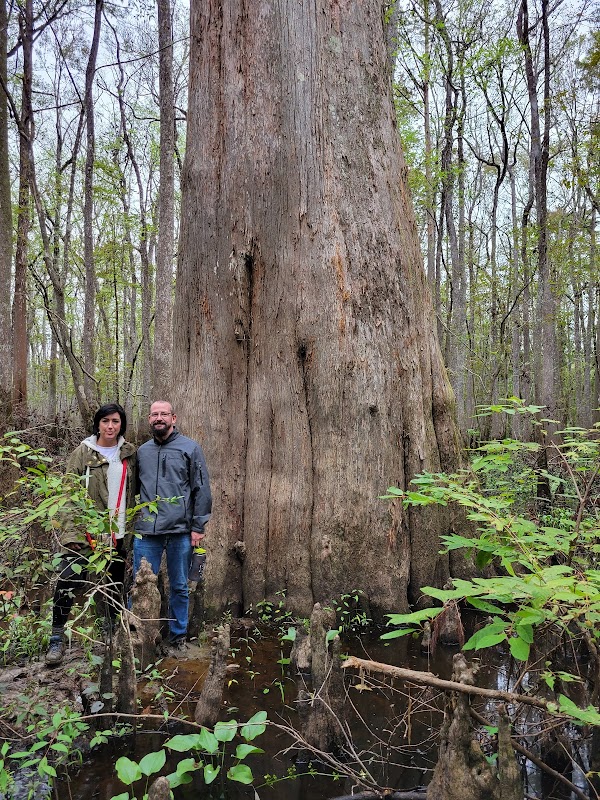
Explore Alabama's prehistoric sea beds, where fossil hunting uncovers ancient marine life buried beneath layers of sediment. From shark teeth to giant sea turtle remains, discover practical tips for planning your fossil dig adventure near Mobile and what to expect on this unique outdoor journey.
Pack Light, Pack Smart
Fossil hunting requires hands free and gear that fits easily; bring small digging tools and a sturdy collecting bag to keep finds secure without slowing your pace.
Stay Hydrated in the Humidity
Alabama’s climate can be warm and humid; carry at least two liters of water, and start early to avoid midday heat when digging becomes tough.
Wear Footwear for Mixed Terrain
Expect a mix of sand, mud, and rocky surfaces; trail runners or hiking boots with good traction will help you navigate safely across uneven dig spots.
Respect Working Dig Sites
Many fossil beds are protected or monitored; always check regulations, avoid disturbing marked areas, and follow Leave No Trace principles to preserve this fragile environment.
Dig Site Secrets: Discovering Fossils in Alabama's Prehistoric Sea Beds
Beneath Alabama’s modern soil lies a record far older than its forests and cities—a submerged world of prehistoric seas that once spread across the region. Digging into these ancient sea beds reveals fossils that tell stories from millions of years ago, when sharks, giant sea turtles, and marine reptiles ruled a landscape now inland. This adventure is as much archaeological as it is outdoor exploration, inviting you to unearth remnants of an earth fiercely in motion.
Your starting point is typically the famed fossil hunting sites around the Gulf Coast region, where erosion cuts into sedimentary layers sculpted by water’s steady insistence. Most sites are accessible via light hikes averaging 2-4 miles, with minimal elevation change but significant terrain variation—expect soft sand, rocky outcrops, and occasional muddy stretches that dare you to keep your footing.
The ground here is a patchwork of prehistoric rubble—shards of shark teeth, coral fragments, and bones that hint at a sprawling underwater ecosystem. Holding a shard of fossilized tooth offers a tactile link to giants that once dominated these waters. Each find requires careful extraction; bring small tools and plenty of patience—fossil hunting isn’t a sprint, it’s a meticulous dialogue with the earth.
Timing is critical. Early spring or late fall, before the unforgiving southern heat sets in, offers cooler temperatures and less crowded dig spots. Hydration is non-negotiable; the low canopy cover means sun exposure can quickly sap your energy. Sturdy boots with good grip help navigate shifting sediment and hidden roots.
As you follow the low ridges and creek edges where sedimentary layers are exposed, listen to the rustle of dry leaves and distant calls of birds—nature moves alongside you, neither hostile nor welcoming, but always present. The fossil beds challenge you to blend curiosity with respect; these are remnants of a world that demands humble engagement.
Beyond the dig, the nearby town of Mobile invites a decompressing pause: local museums, fossil exhibits, and historic architecture round out this adventure. Whether it’s a solo quest or a family outing, fossil hunting in Alabama’s prehistoric sea beds combines the thrill of discovery with a grounded, practical escape into layered history beneath your feet.
Nearby Trips
All Adventures
Boat Charters
Water Activities
Adventures near Mobile, Alabama
Discover the unique and memorable adventures that make Mobile, Alabama special.
Frequently Asked Questions
Do I need a permit to hunt for fossils in Alabama?
Most fossil hunting in Alabama takes place on private or protected land where permits may be required. Public lands like state parks have specific rules—check with local agencies before you dig to respect regulations and protect sites.
What kinds of fossils am I most likely to find?
In Alabama’s prehistoric sea beds, shark teeth are common finds, as well as fragments from ancient sea turtles, rays, and marine mollusks. Larger vertebrate bones are rarer but possible in exposed sediment layers.
Are fossil sites difficult to reach?
Most popular fossil beds are accessible via short, moderate trails with little elevation gain. However, some areas involve uneven or slippery terrain, so suitable footwear and caution are recommended.
Can children safely participate in fossil hunting?
Yes. Many fossil sites near Mobile are family-friendly with gentle trails, but close supervision and safety precautions with digging tools are essential.
What is the best time of day to search for fossils?
Early mornings are best—softer light reveals textures more clearly, and the cooler temperature makes exploration more comfortable.
How can I identify a genuine fossil from regular rock?
Fossils typically have distinct shapes or textures: shark teeth are often glossy and triangular, bones have porous surfaces, and shells exhibit recognizable patterns. Bringing a field guide or using an app can help verify finds.
Recommended Gear
Small Hand Trowel
Essential for gently prying fossils from sediment without causing damage.
Hydration Pack or Water Bottle
Keeps you hydrated during long hours in the sun, especially critical in warm seasons.
Sturdy Hiking Boots
Protects feet across sandy, muddy, and rocky terrain common at dig sites.
Sun Hat and UV Protection
Provides shade during exposed portions of the dig, reducing sunburn risk.
Local Insights
Hidden Gems
- "The Little Dauphin Island fossil beds offer quiet pockets where erosion exposes rare vertebrate fossils."
- "A remote creek near Weeks Bay occasionally reveals coral fossils after heavy rains."
Wildlife
- "Watch for great blue herons and ospreys hunting along creeks."
- "Eastern box turtles often cross trails, moving deliberately through the undergrowth."
History
"Alabama’s prehistoric sea beds were once part of the Gulf of Mexico's ancient shoreline during the Late Cretaceous, roughly 80 million years ago. This region was a marine hotspot, providing critical insights into extinct marine ecosystems."
